Kenny Slocum is the naturalist and natural resource manager for the Clayton County Conservation Board.
The Motor Mill historic site, just southwest of Elkader, Iowa on the Turkey River has a deep history. Today, visitors come mostly to see the six-story limestone grist mill and ghost town, abandoned after wheat crops failed in the 19th century.
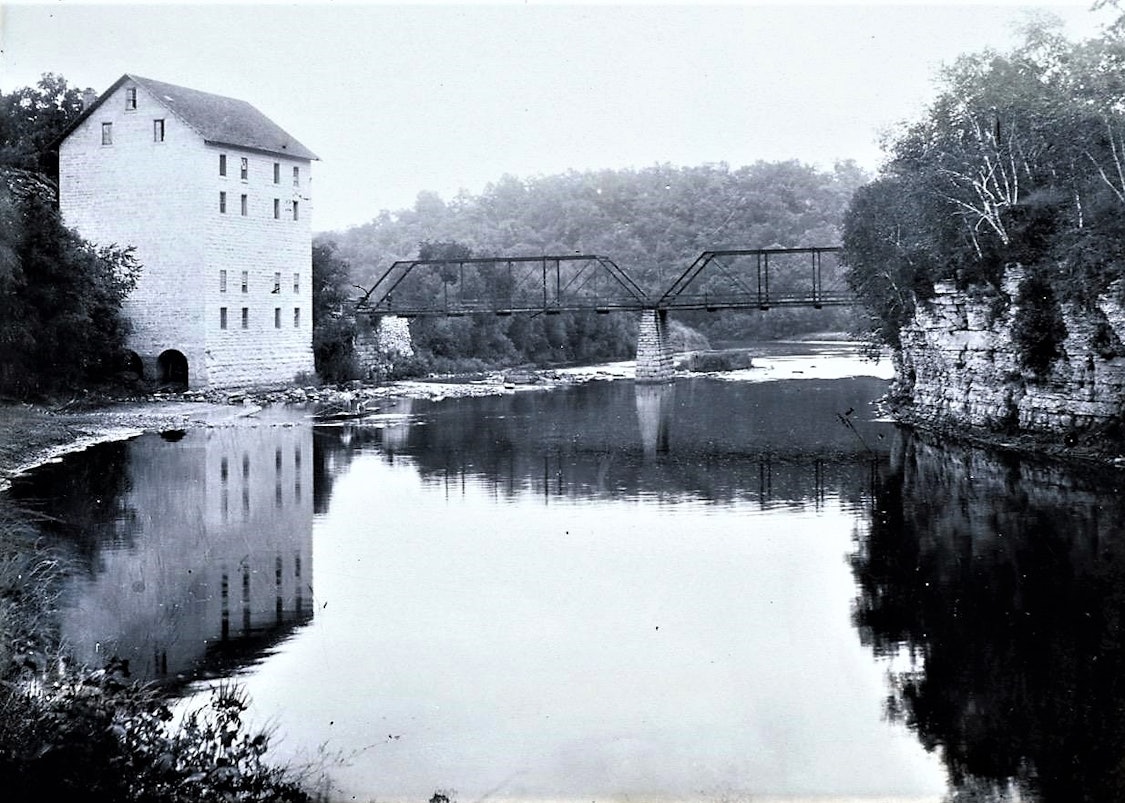
Motor Mill, circa 1915
In its heyday, the old town of Motor held immense promise thanks to its quirky geography. An ancient, abandoned meander in the river had created a rich floodplain primed for cropping. Rocky ridges on either side of the river harbored beautiful, old-growth white oak perfect for the sturdy structural beams that have survived for more than a hundred years in the remaining buildings.

White oaks
The roots of those stately old oaks had grown into the bedrock that formed the surrounding topography. The blocky limestone, barely covered in fine, thin loess blown from the surrounding floodplain in just the last few thousand years provided another essential building material for the ambitious town founders.
Today, the old town of Motor functions as a natural area stewarded by the Clayton County Conservation Board. That same quirky geography that held so much potential to the town founders presently harbors a wild melting pot of Iowa’s natural treasures. Tiny microhabitats borne of the rugged topography bring a new delight with every few steps.
In the far southwest corner, a shallow pond hums with life from the moment the ice starts to let out from the center in March until the edges harden again in November. Shallow ponds like these, where large predatory fish can’t survive, provide the perfect conditions for amphibians and insects to carry out the early phases of their life cycle.
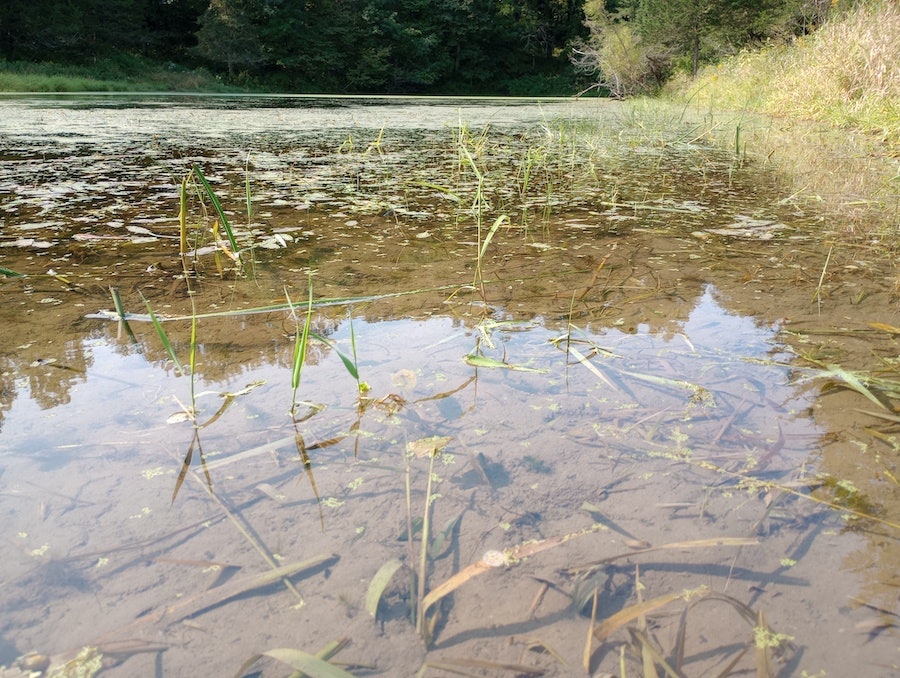
Even better, this pond sits right at the edge of an extensive reconstructed prairie, giving ample nectar to pollinators who in turn become prey to the dragonflies maturing in the pond.
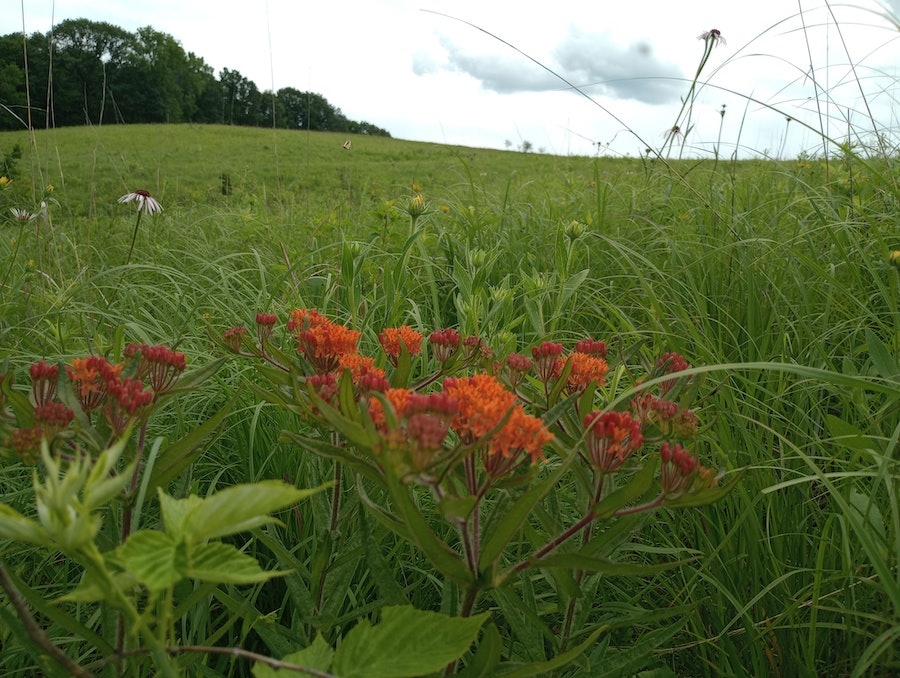
Butterfly milkweed
But a few hundred feet north of the pond, a clump of trees has invaded a shady corner of the prairie. Here are some Quaking aspen (Populus tremuloides) saplings. A small grove has come to flourish along the prairie’s edge, likely clones of the mature trees on the other side.
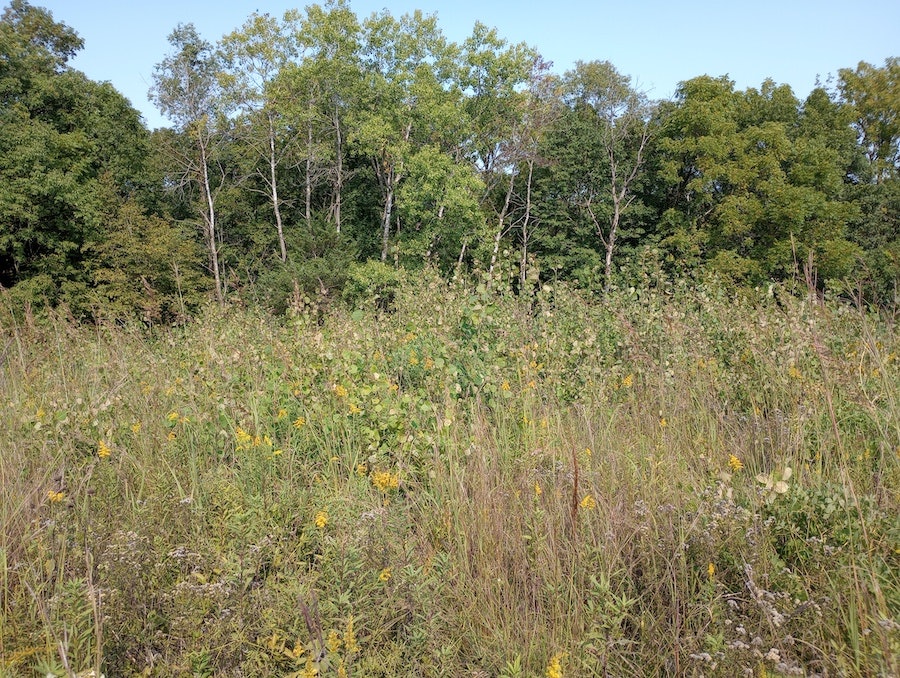
Aspen thicket
As a prairie lover, I’m torn. Woody plants in a prairie often get treated like a dandelion on a golf course. But here on the edge, I’m thinking about the bird species that depend on shrubby thickets like these to nest.
In the unbroken, pre-European settlement landscape, tiny patches of highly-disturbed (by wind, fire, flood, humans, mammoths, etc.) “early successional” forests would have wandered around the landscape. Like nomads following game herds, dependent species would have wandered right alongside them, chasing storms and smoke across a patchwork landscape of constant change.
Aspens and their associates represent communities that want to get beat up every once in a while. In fact, to keep an aspen forest, most managers will simply clearcut the trees every fifteen years or so and let them resprout. These disturbance-dependent plants fade fast from a stable environment, as shade-tolerant species get enough time to pass up their pioneering overlords.
Just past the aspens, I see this idea in full effect. In just a few steps, the aspens give way to a mature sugar maple (Acer saccharum) forest. Sugar maples represent the last stage of forest development, one of the few native tree species that can grow in the full shade of their parents.
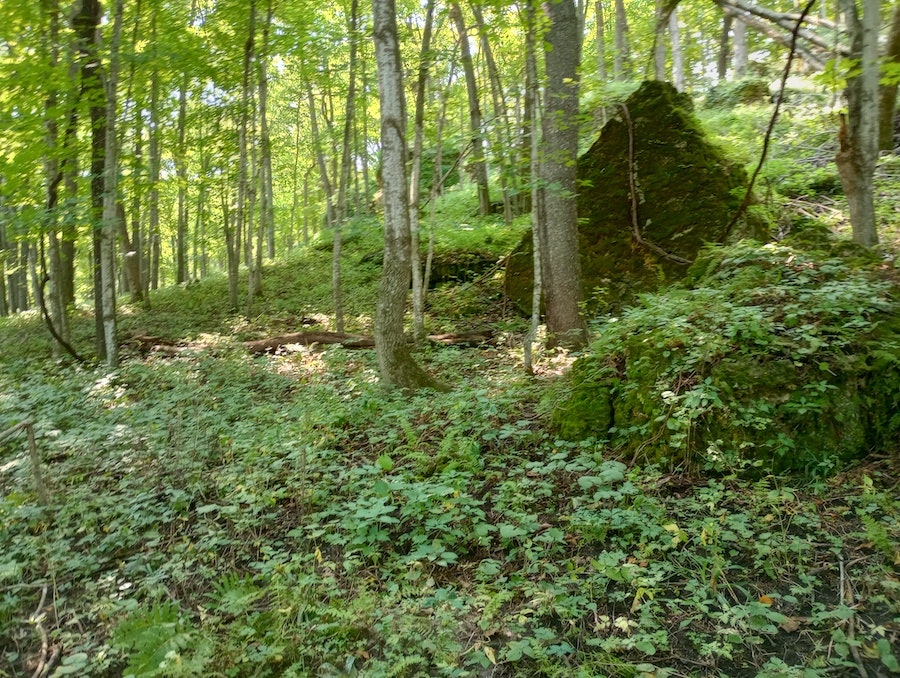
Maple-basswood
These forests, for the most part, have a relatively barren understory. The spring ephemerals may make hay while the sun is shining before leaf-out, but the leafy maples absorb most of the sunlight by mid-May.
But nature abhors a vacuum, and a few plants have found uncrowded environs under even a full canopy. This north-facing hillside, where the air feels damp all year, hosts a population of great waterleaf (Hydrophyllum appendiculatum) along the equestrian trail.

Great waterleaf
A close relative of Virginia waterleaf (Hydrophyllum virginianum), the “great” version has massive dewy leaves and an incredibly showy flower. At this period, when the spring ephemerals have finished blooming and the prairie hasn’t yet started, these beautiful blossoms become a proverbial water cooler to local pollinators.
Further up the trail, blue cohosh (Caulophyllum thalictroides) listens to the trickle of the turkey river below. This flower’s striking, succulent stem stands out in the early spring upon emergence, but the bloom gives the impression the flower is trying to keep a secret. The subtle, short-lived bloom is easily missed; before long, the plant turns into just another green thing.
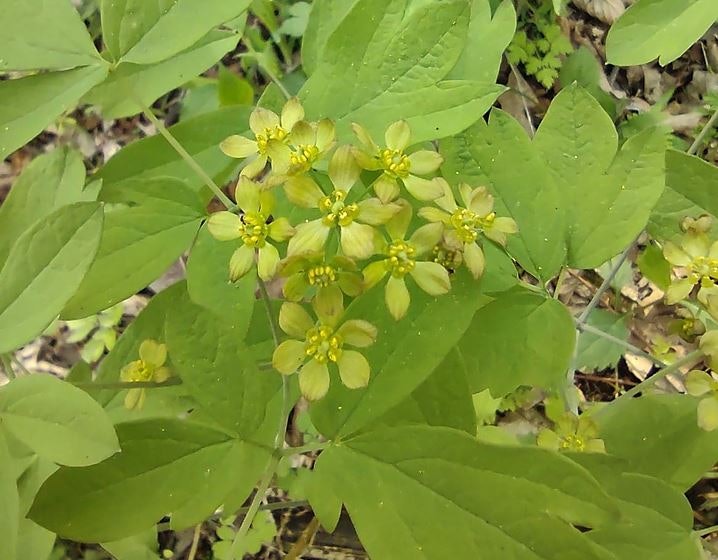
Blue cohosh
It is self-pollinated, so it stands to reason it would keep a low profile – it doesn’t need the help. Later in the summer, large berries will recruit all the zoological help it needs to carry on its genetic legacy.
The cohosh found a pocket of soil in what’s otherwise a small boulder field. The collapsed hillside overlooking the Turkey features a dappled mix of rich-soil woodland plants and nutrient-starved cliff dwellers, like this lyre-leaved rock cress (Arabidopsis lyrata).
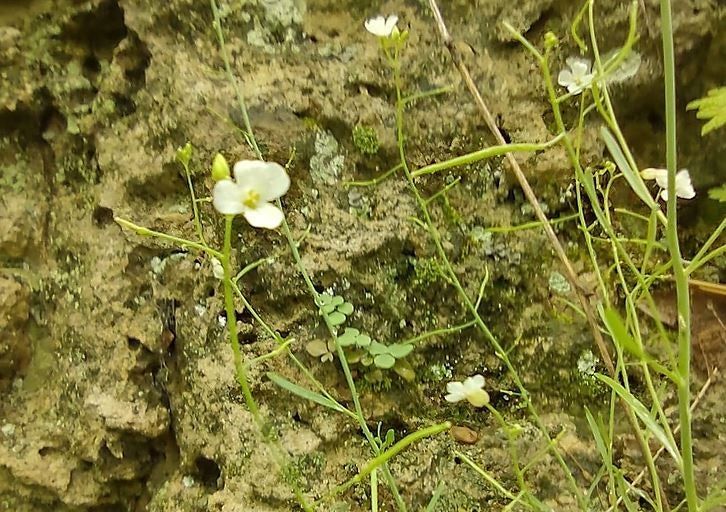
Lyre-leaved rock cress
These cliff communities don’t look like much, but they represent a glimpse of the past in plain sight even in the most disturbed areas. A rock that would wreck a tractor today would have wrecked one a hundred years ago, too. The pockmarked rock has caught the seeds of cliffhangers for as long as the rock has been exposed.
Across the river, the Grau Memorial Savanna trail wanders up towards the old quarry that built the town. On the south end, overlooking the mill itself, a remnant goat prairie hangs on for dear life. Leadplant (Amorpha canescens) dangles its seed over a cliff, unfortunately situated to fall into a too-shady cedar forest that has grown up since the start of the fire exclusion era.
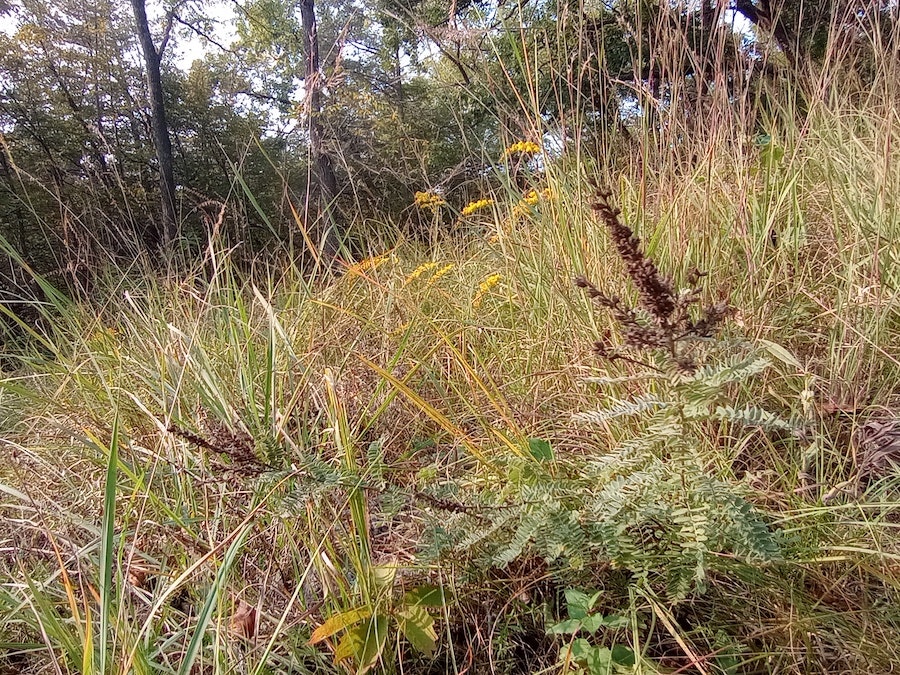
Leadplant
Further back from the edge, the open-grown bur oaks give way to proper upland oak-hickory woodland. When I’d first started working with the conservation board, the area hadn’t seen fire in almost a decade; Rubus species (blackberries, raspberries, etc.) had come to dominate the site.
A few fires later, and the berries have abandoned the throne. Tiny pockets of diversity had started to spring up, including Kalm’s brome (Bromus kalmii). One of Iowa’s few native bromes, this handsome grass proves hard to identify anatomically. But functionally, it plays well with others compared to its invasive pasture-grass cousins.
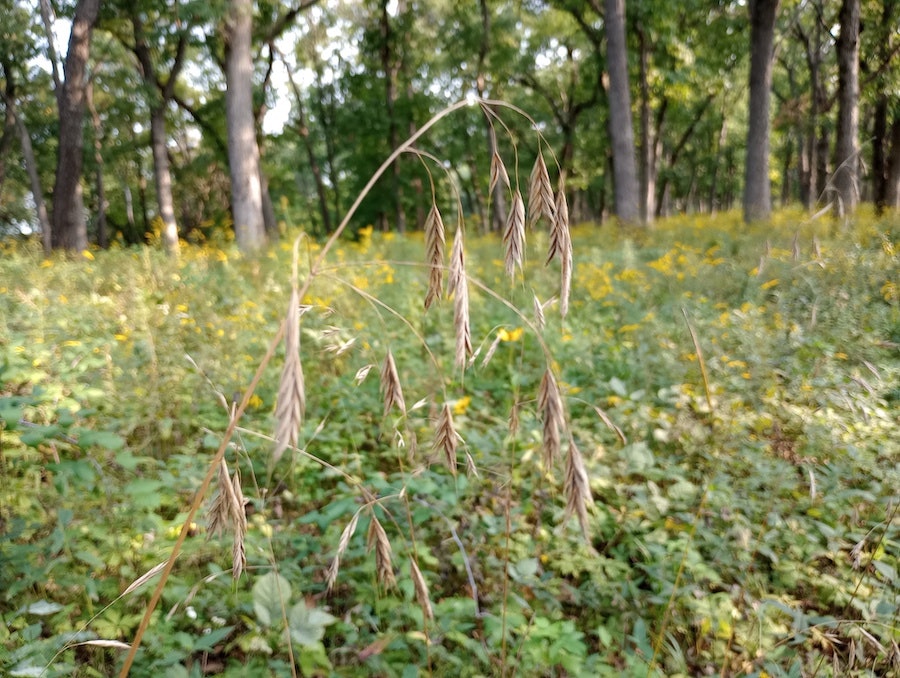
Kalm’s brome
Down the hill, the woodland gives way to prairie again. I recall burning this prairie in the spring, and seeing one unburned patch when the smoke had cleared. Chorus frogs started singing from the small seep not ten minutes after the fire finished. Like many reconstructions, this one is dominated by grasses, but this little wet spot today has just a few more conservative plants. Here’s pale or cream gentian (Gentiana alba):
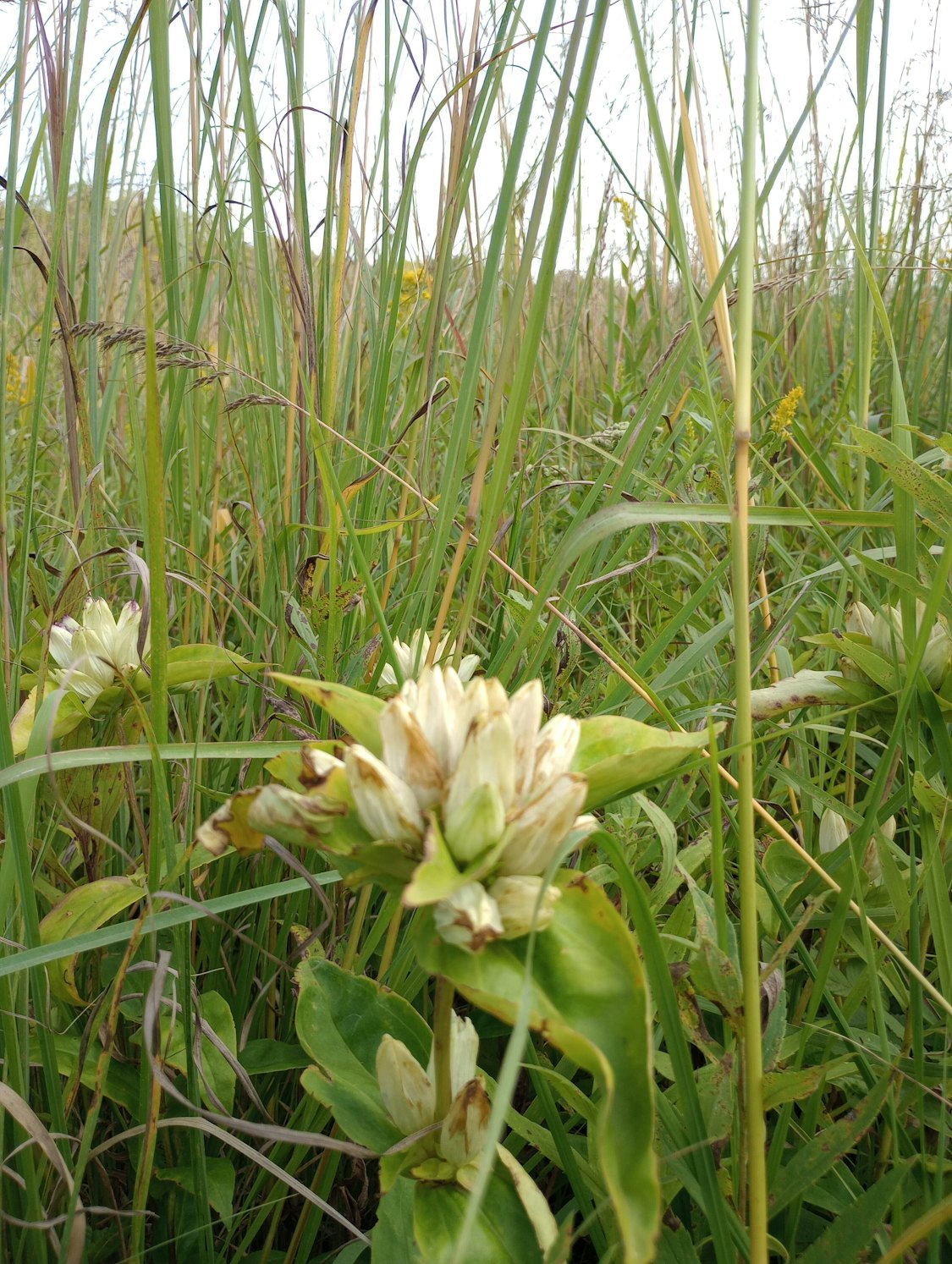
Cream gentian
Heading towards one more ridge, I marvel at the floodplain woods absent of garlic mustard. The plants tell a story as to why.
Great Indian Plantain (Arnoglossum reniforme) is a highly conservative woodland wildflower. This corner of the Driftless represents the northwest end of its native range; the species is threatened in Minnesota and Wisconsin. But it also represents an undisturbed herbaceous layer; never plowed, tilled, maybe lightly grazed, but otherwise a botanical time capsule.
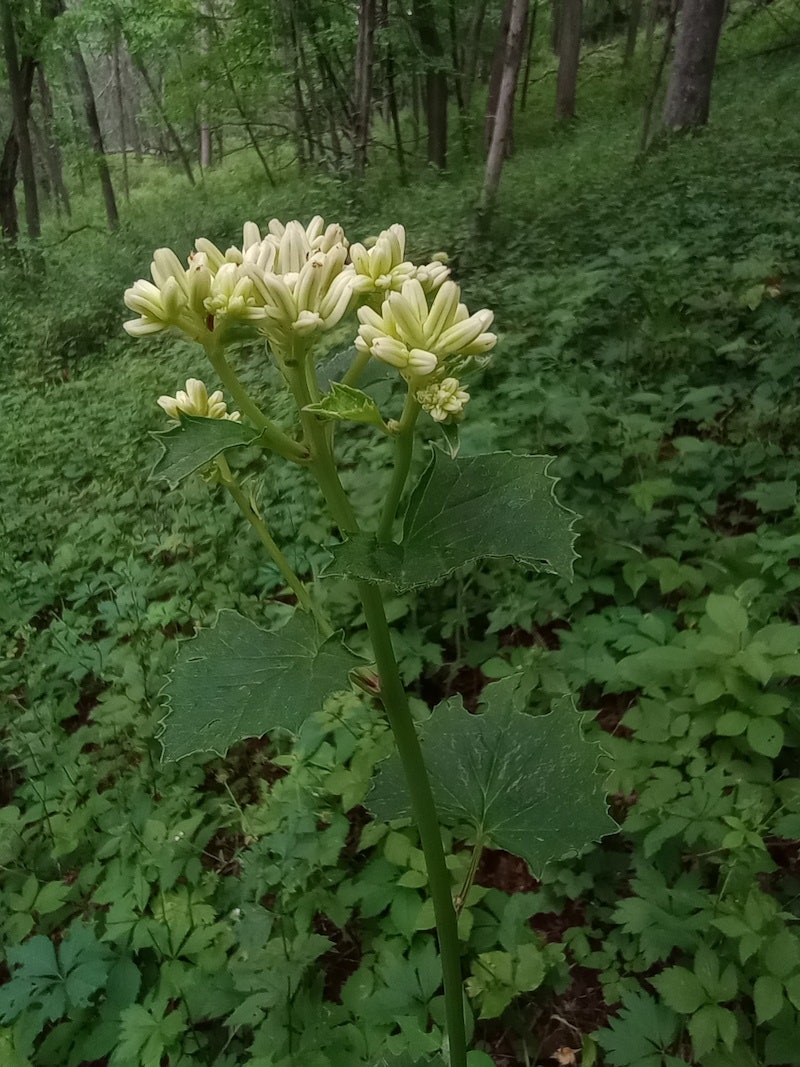
Great Indian plantain
With all of the soil biology intact, and a diverse suite of plants making seeds each year, this little ravine remains resistant to invasion even while garlic mustard presses in from all sides.
Climbing up the hill, I come to one last “full sun” community. This ridge cuts like a shark fin through the flood plain below. For years, a small cohort of flower lovers have made a pilgrimage to this ridge to view pasque flowers (Pulsatilla patens) in the early spring.
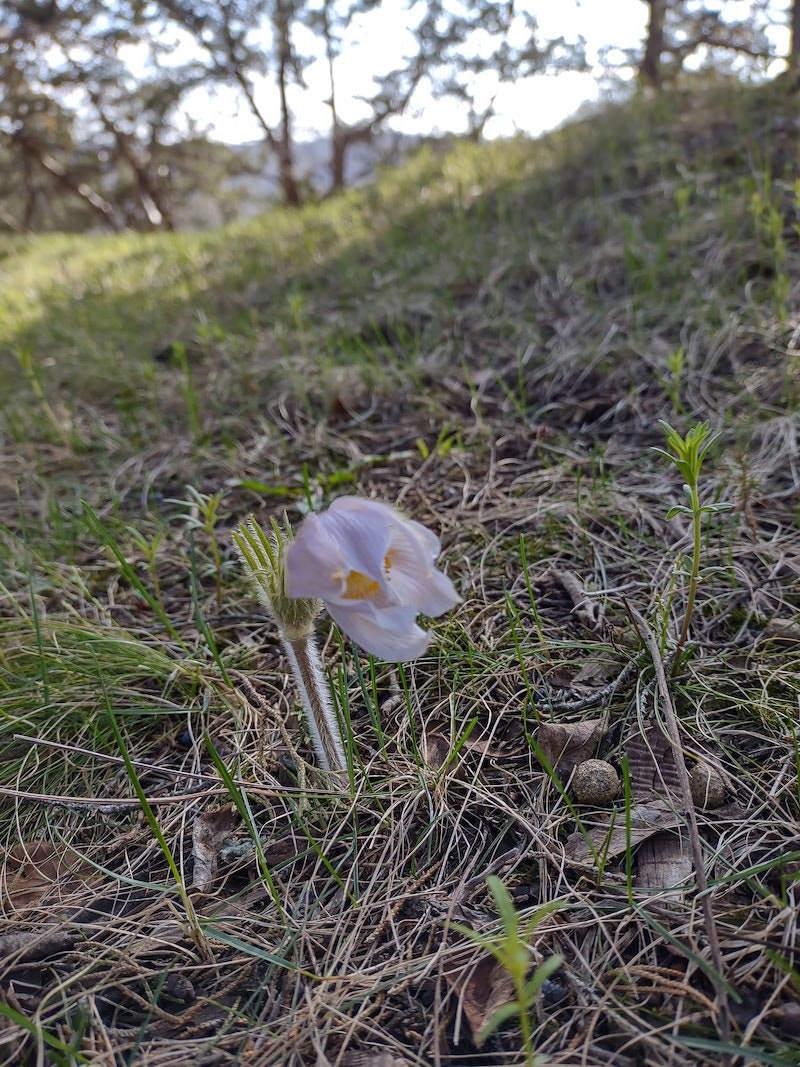
Pasque flowers
But just a few months later, the undisturbed habitat gives way to surprisingly weedy species. A vagrant asparagus waves in the breeze, common ragweed pokes up through the needles of cedar, and white four o’clock juts out of every rocky crevice.
These limestone glades have even more pauperis soil than goat prairies. Only shallow-rooted plants can find their footing, which creates a melange of conservative plants and full-blown weeds living in harmony.
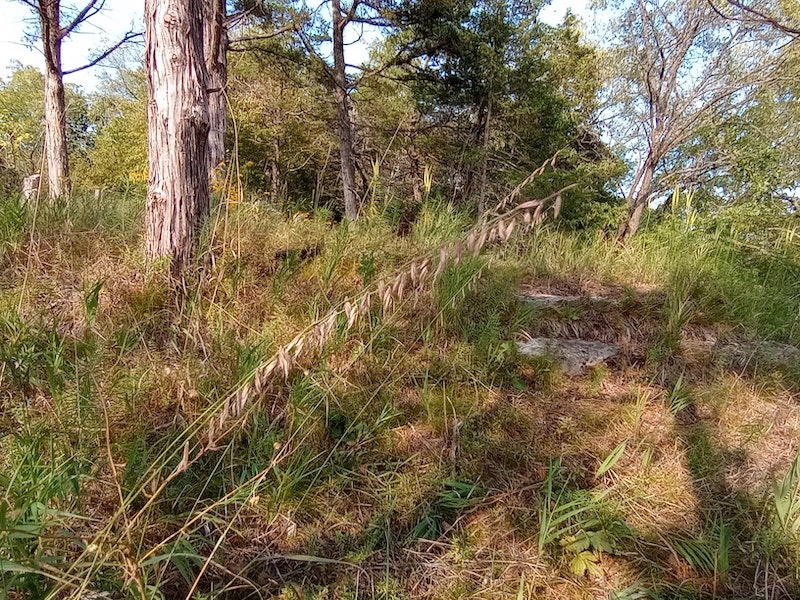
Sideoats
I look back to the southwest at where my walk began, pondering the diversity of habitats encountered in less than a mile as the crow flies. This, to me, is the hidden secret of hiking in the Midwest.
We don’t have summits to conquer, or rocky cascades. Often, we’re presented with a hiking trail that has no real destination at all. But that’s not to say there’s nothing to see.
I spent years in the west and got used to the idea that a “hike” meant getting somewhere. Since I have moved back to Iowa, I have told countless western transplants to sell their trekking poles and use the profits to buy field guides if they really wanted to appreciate this place.
Before I had my botanical awakening, like a lot of young outdoor enthusiasts I wanted to check destinations off a list. I wanted to climb fourteeners, rappel into slot canyons, or see how far I could get in a single day under my own power. Once I’d “finished” a hike, I rarely thought about going back.
Today, I’d rather walk this same route through Motor Mill a thousand times. I want to come back, to see which plants have remained, arrived, or disappeared as the years pass. Drought years, wet years, cold winters, cool summers… each variation in the year’s weather will lead the prairies and woods to express themselves differently. I could retrace my steps weekly and never have the same experience twice. A few more plants I’ve found here:
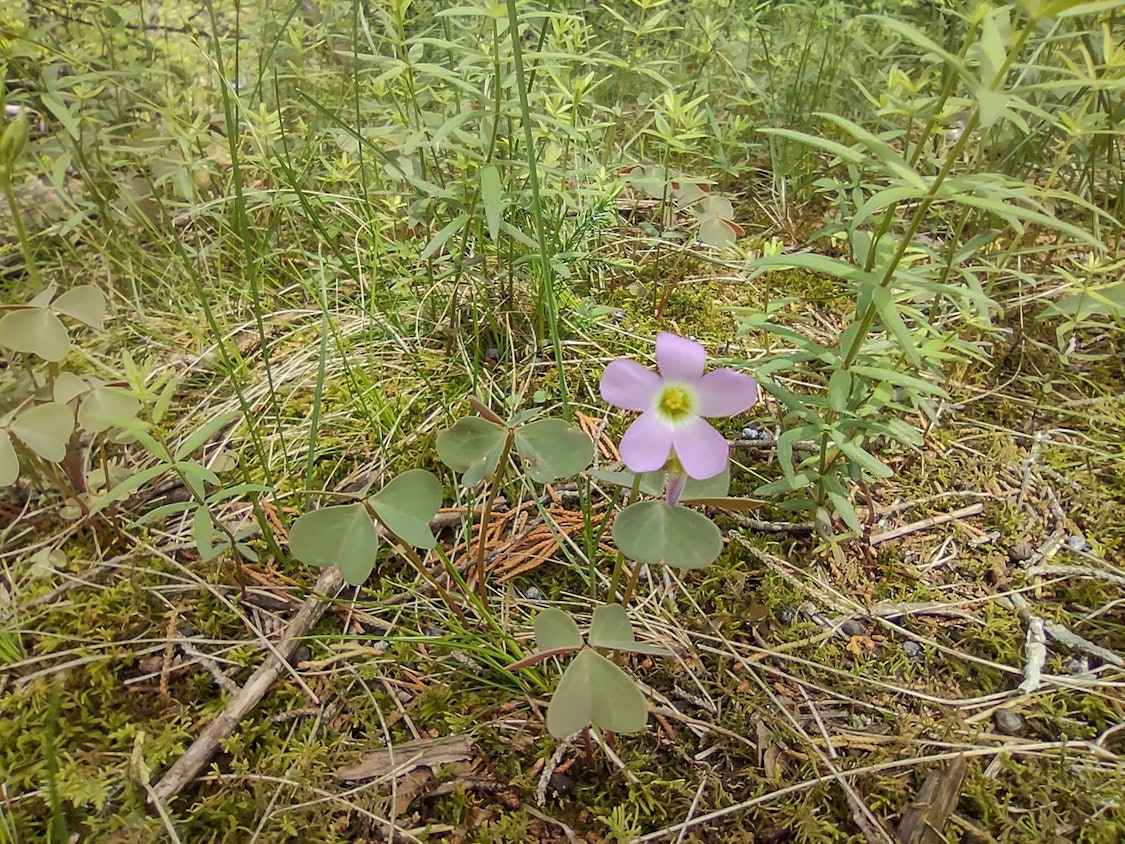
Violet wood sorrel
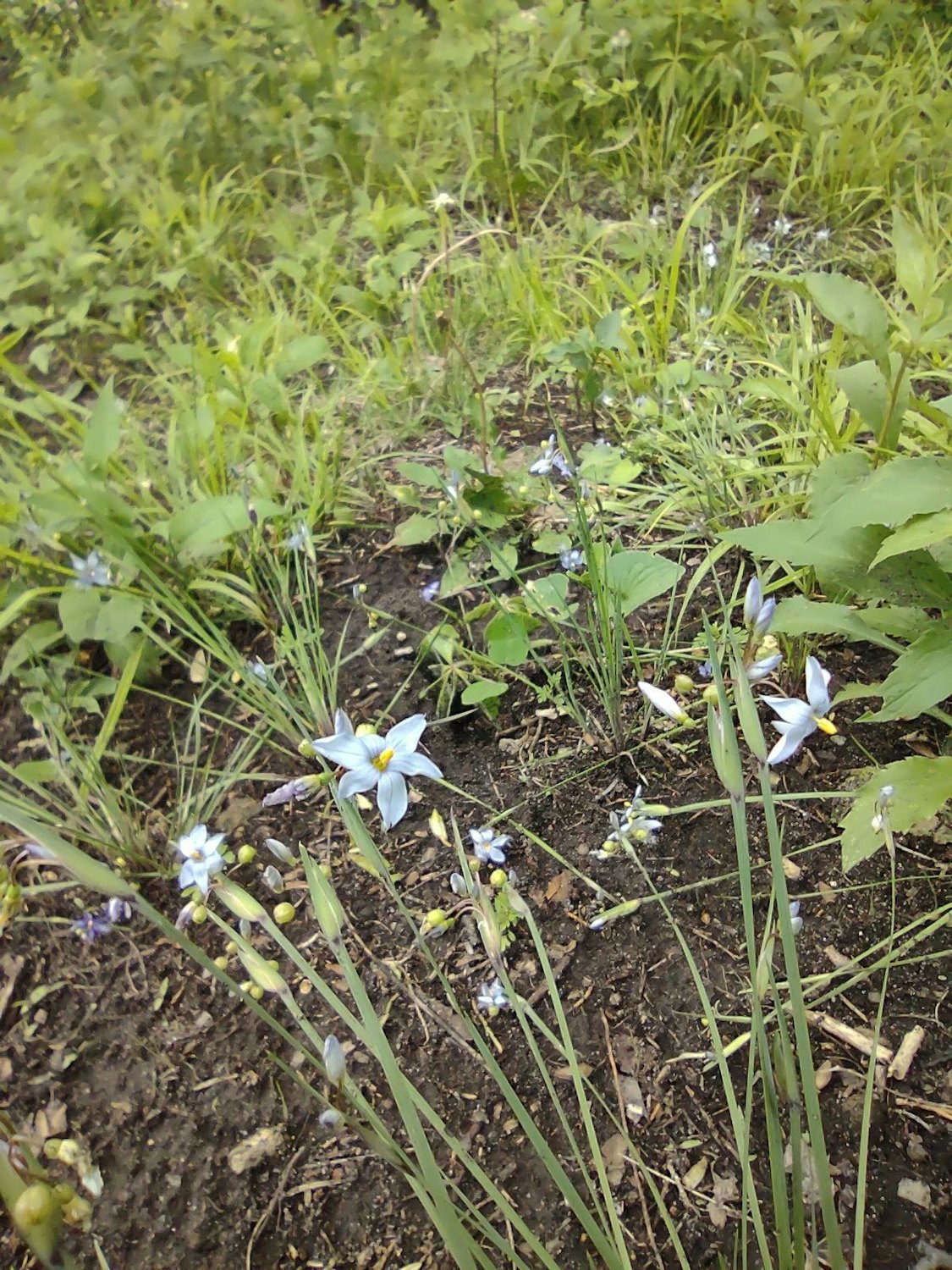
Blue-eyed grass
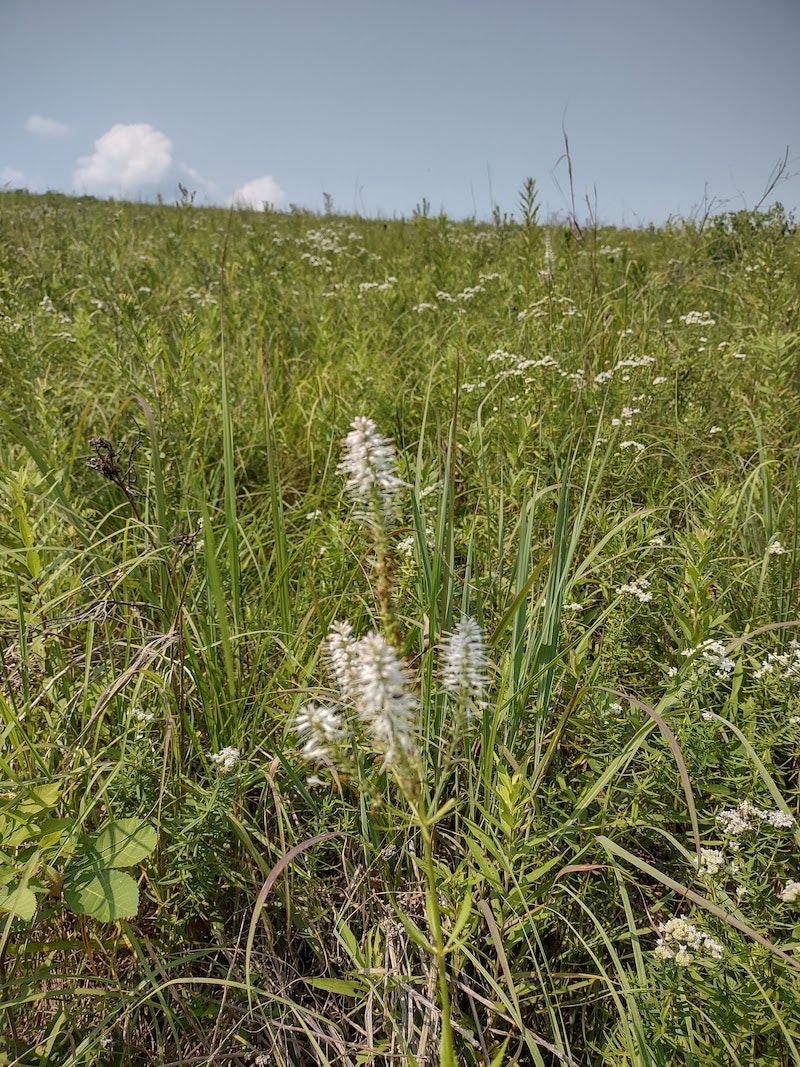
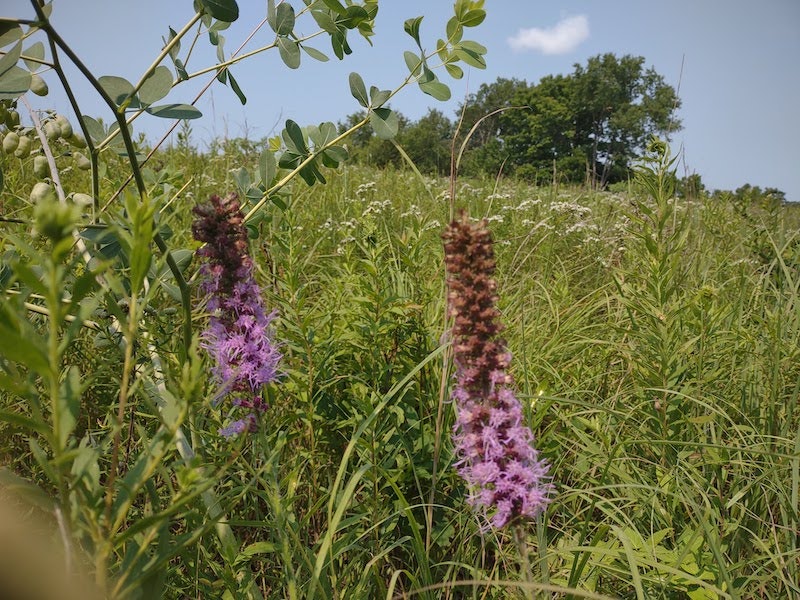
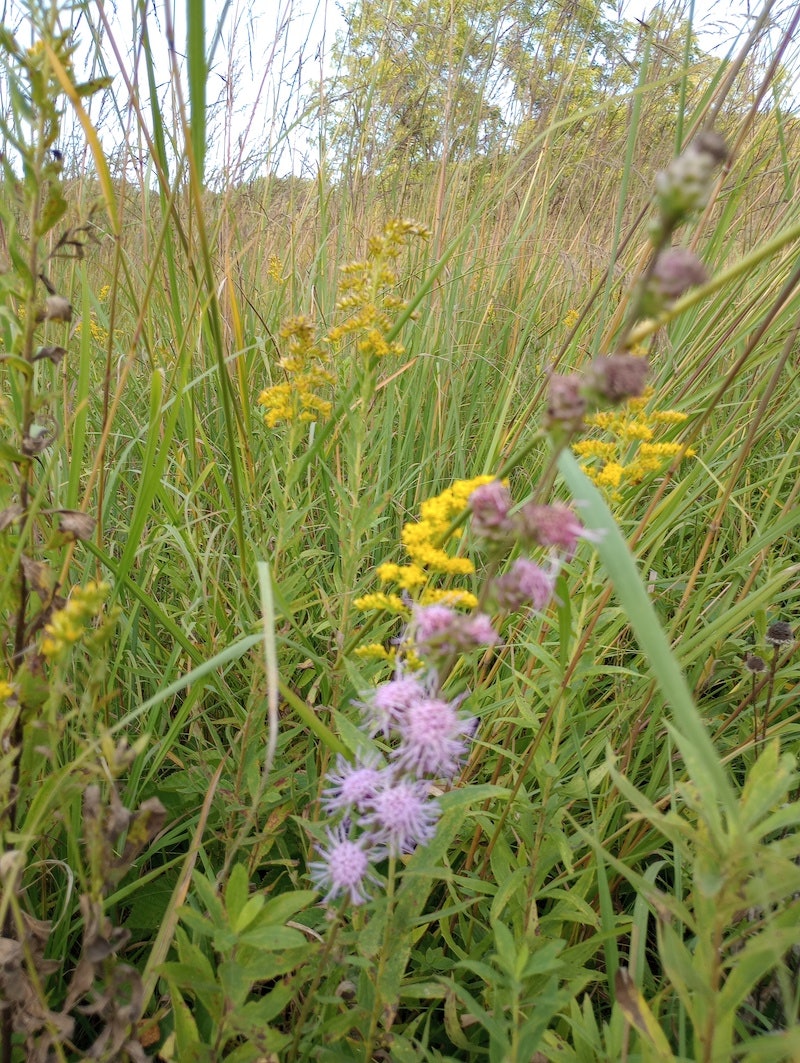
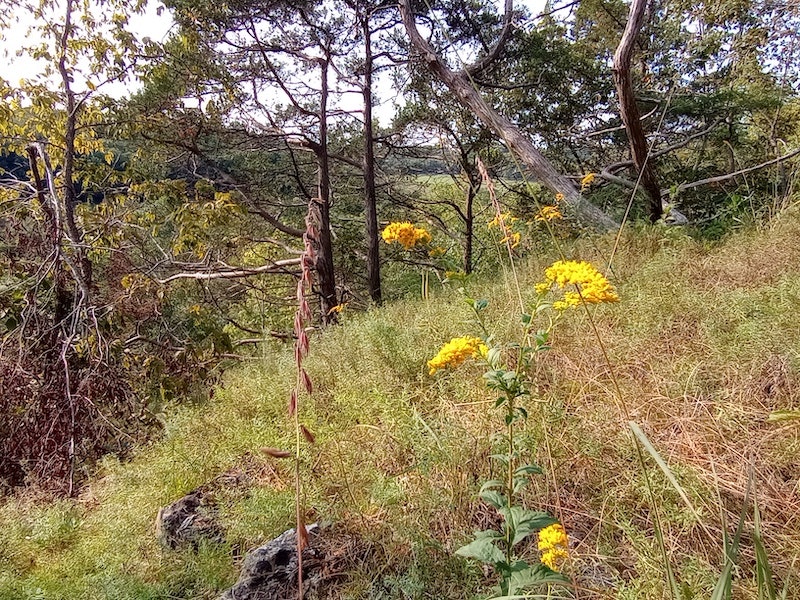
Gray goldenrod
Importantly, the microhabitats of Motor Mill demonstrate the need to take a near-sighted and repeated approach to Iowa exploration. How many plants or animals have I missed? In a state so bereft of such natural places, how many can I afford to miss before they’re gone forever?
At the nexus of the tallgrass prairie and the eastern hardwoods, Iowa’s diversity shines even with a woeful rank in terms of our percentage of public land. Our natural world borrows a bit from the great lakes where White Pine towers over a cliff. It borrows a bit from out west where a prickly pear drinks up sunshine on a rocky knob. It borrows a little from down south, sprinkling chinkapin oak on thin-soiled blufftops that never get quite as tall as their brethren in the Ozarks.
Most visitors to the park today come to contemplate the site’s human history. But beyond the masonry, the park holds an array of tiny snapshots into Iowa’s natural history, too. It just takes some attention to the skills of observation, and a little imagination, to translate these experiences from snapshots to blueprints for how to recover our lost ecosystems.

All photographs by Kenny Slocum published with permission.

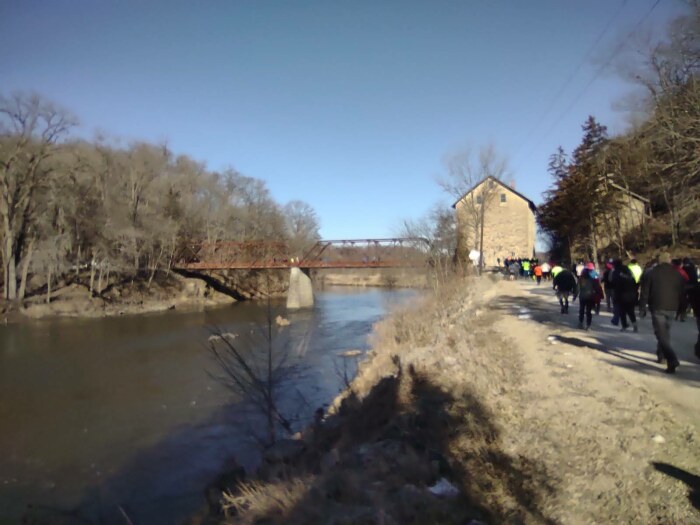
1 Comment
This is a wise and perceptive essay...
….with beautiful photos. Iowa is lucky to have you, Kenny Slocum.
PrairieFan Thu 29 Sep 2:01 AM